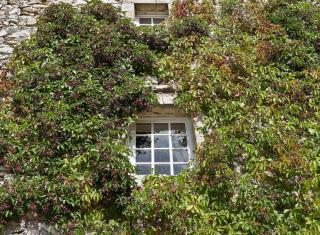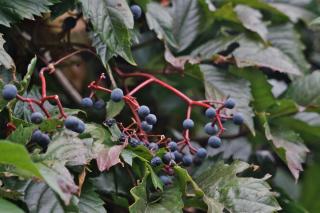

Virginia creeper, although sometimes mistaken for ivy, has many advantages when it comes to covering walls and pergolas.
Key Virginia creeper facts
Name – Parthenocissus
Family – Vitaceae
Type – vine
Height – 32 to 65 feet (10 to 20 meters)
Exposure – full sun, part sun
Soil – ordinary
Foliage: deciduous – Flowering: June-July (very light)
Care is very easy and the decorative impact of Virginia creeper is remarkable.
Better to plant Virginia creeper in spring or in fall, when not freezing.
Regularly water over the 1st year after planting.

If it covers too large a space, or to keep it from obstructing windows and roots, you can prune it anytime.
Note that it’s important to keep it from reaching your gutters and roof: the powerful vine can lift shingles and cause leaks.
So simply come back at it every once in a while with sharp pruners and the trick is done!

Just like ivy, its hooks don’t damage old walls, and so there is no problem in letting climb up the wall directly.
It’s fruits and berries aren’t edible, even if it’s part of the same family as the grape vine.
Unlike ivy, Virginia creeper is deciduous, and so the shift of hues along the year is rich and amazing!